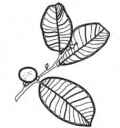The Chokogou Project
Starting in 2011, the Chokogou Project works primarily with groups of local farmers and small agroforestry farms to plant trees around the country. Our collaborations with Haitian families specifically aim to revive the practice of “lakou” gardens, (small traditional food gardens established around homesteads).
The project focuses on planting Brosimum alicastrum, more commonly known as the Mayanut Tree (MNT), as its important ecological and socioeconomic contributions make it a particularly important agroforestry species to address key challenges in the Haitian context, notably degraded soils and community vulnerability.
In addition to MNT’s numerous ecological qualities (such as carbon sequestration, soil regeneration and drought resistance) and important agroforestry contributions (including providing fodder and increasing the lactation potential of livestock), the tree produces a nutritive and versatile nut for human consumption.
Indeed, MNT nuts are not only highly nutritious, but also well adapted to Caribbean culinary traditions. Their taste, resembling coffee and chocolate, has leant the nuts their Creole name of “chokogou”. Furthermore, in comparison to mangos, avocados or other common fruits found in Haiti that can only be consumed fresh during their fruiting season, MNT nuts are easily transformed and conserved, for example by being dried, roasted, and ground into flour. MNT can therefore make a critical contribution to the food security of local communities year-round.
In collaboration with local actors and communities we have thus far planted over 300,000 food-producing trees (roughly 70% MNT and 30% other beneficial species) in gardens, hedges, and rural family fields. In addition, over 20,000 people have been made aware of the MNT’s numerous benefits, including how to transform, cook with and incorporate the nuts into local recipes. As Mayanut trees can survive without much rain and for up to a thousand years, they will bring important ecological and social benefits to Haiti and Haitians for hundreds of years to come..
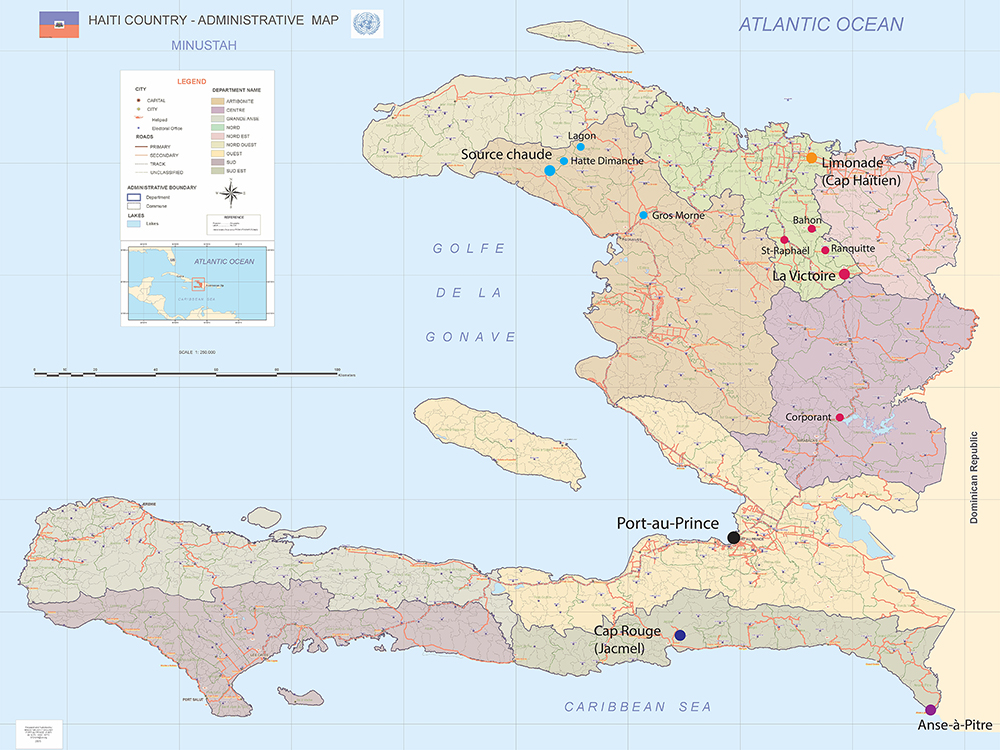
Map showing the main localities where our partners on the ground are planting trees.
Social & Environmental Context
Haiti shares the island of Hispaniola with the Dominican Republican, in the Grand Antilles. It is the third largest country by area in the Caribbean region and the most populous.
In addition to being one of the most vulnerable countries to the effects of climate change, Haiti’s geographic location places it at the intersection of tectonic plates and in a trajectory frequented by Hurricanes, making it particularly exposed to natural catastrophes, as evidenced by the devastating 2010 earthquake and Hurricane Matthew in 2016 from which Haiti is still recovering.
From a socioeconomic standpoint, Haiti is one of the poorest countries in the Northern Hemisphere. The state struggles to provide even the most basic services (including education, health, infrastructure) to its population of 11 million citizens, over 6 million of which live below the poverty line (meaning they survive on less than $2.40 per day, as declared by the World Bank). The national currency, the gourde, continues to depreciate, fuelling double-digit inflation that broke the 17% mark in May 2019, according to the Haitian Institute of Statistics and Informatics (IHSI).
Haiti is also heavily affected by deforestation. Indeed, it is often cited as being amongst the most severely deforested countries in the world, with some studies estimating that only 2% of the island remains forested.
The country’s chronic environmental problems are directly linked to this extreme deforestation, including (but not limited to): erosion and degradation of soils, an increasingly dry climate, the disappearance of natural springs and rivers, chronic malnutrition of rural communities, and insufficient local agriculture production to meet even the population’s most basic food needs.
A key solution to address these challenges lies in the restoration of household food sovereignty by means of effective agroforestry. This includes supplementing homestead food gardens and small plots of crop cultivation with the planting of trees (in hedges, groves and fields) to best protect and diversify food production and local ecology for the long-term.
Partners in-the-field:
Some images:
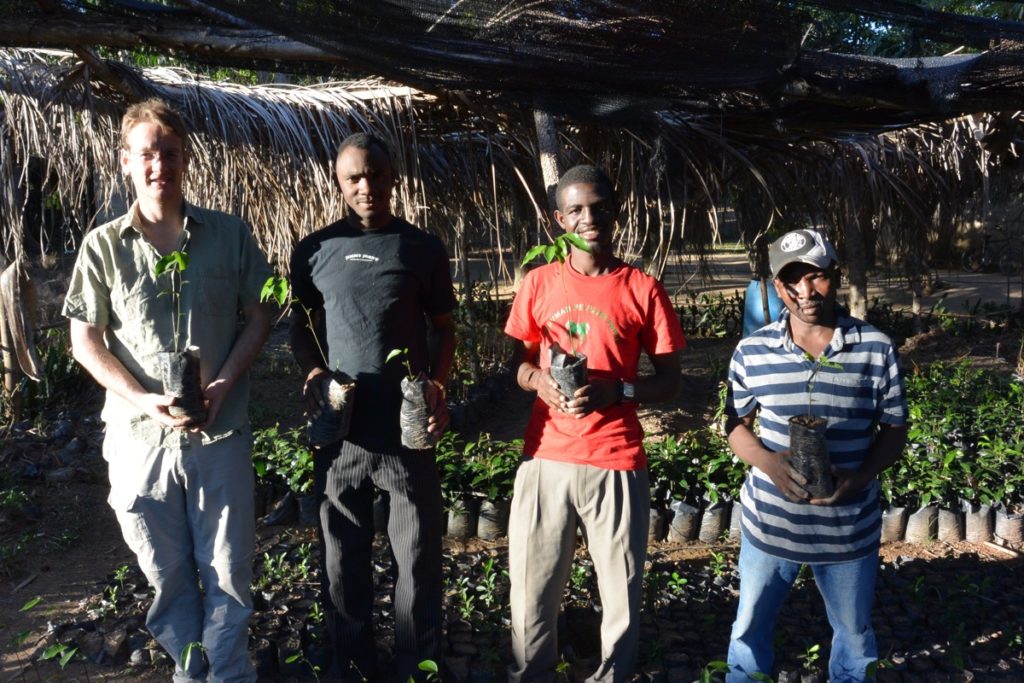
Actors from CFEDEC at La Victoire, with our partner Edex PAUL (in the centre in red).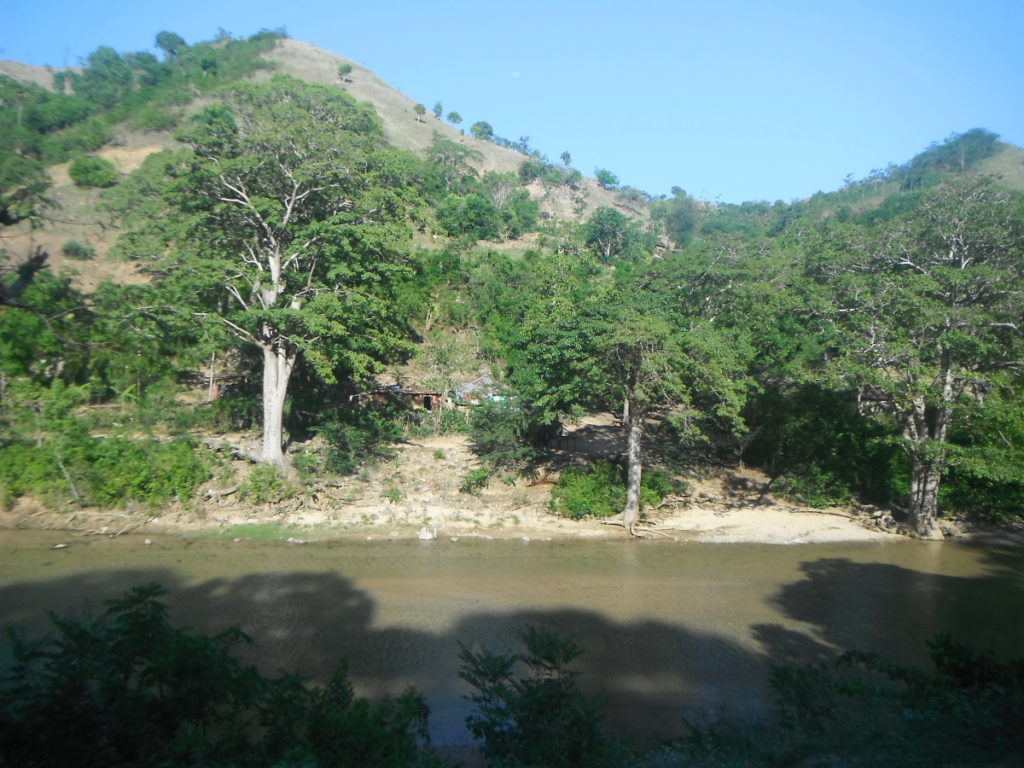
A river to ford during a visit to our partners. 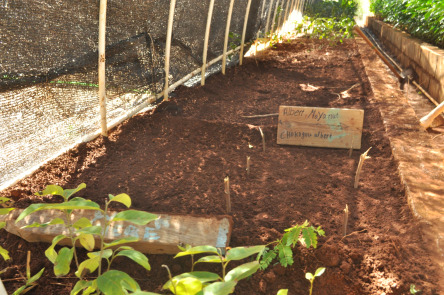
The Sadhana Forest nursery with the first seeds produced by trees planted by us! 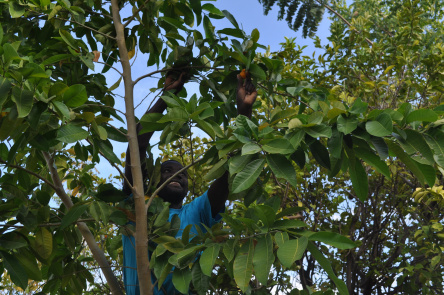
The first mayanuts “Made in Haiti” at Ansapit!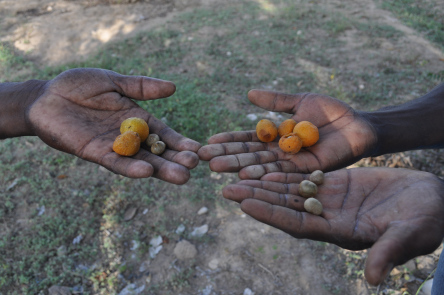
Mayanuts are surrounded by a thin orange fruit flesh, which has a pleasant tangy citrus flavour.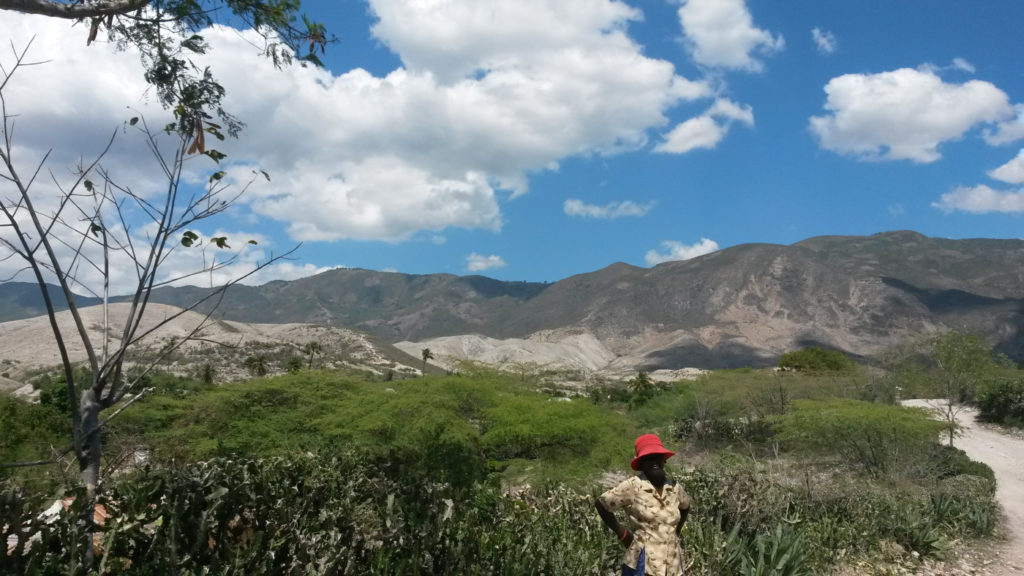
The Lagon landscape in Artibonite.
Some Thoughts…
Hope in the Small-Scale
When you list all the hurdles present in Haiti, many people wonder why we continue to intervene there. The simplest answer is that our small-scale programme is still a useful, albeit partial, seed of hope helping to offset the complex struggles affecting this beautiful country.
Indeed, our small size allows us to transfer the majority of our project funds directly to our partners on-the-ground (for example we have no full-time employees or offices in France, so our overhead costs are low). As we work with the poorest and most isolated farmers in Haiti, even seemingly small contributions make a significant difference to them.
Furthermore, our small-scale, human-centred and ecologically sustainable-minded model promotes meaningful agroforestry solutions that are broadly accessible to even the most rural family farms. This contrasts starkly with conventional modernised agriculture that may claim to help the poor, but which in fact looks past local realities, household needs, and long-term ecological resilience, and which instead prioritises large mechanised farms that rely on chemical inputs, GMO seeds and external finance loans, ultimately favouring production for export rather than local food security.
Taking Root
After nearly ten years in Haiti, we can say with confidence that our Chokogou Project has “taken root”, both figuratively and literally.
To take root in this context means that our project has successfully reintroduced the Mayanut tree to the repertoire of food-bearing trees in Haiti available for human use and long-term food security, with the added advantage of offering important ecological benefits and strong resiliency potential.
With the passing of time this potential becomes even more real as new trees produce their first fruits somewhere in a Haitian garden, on a hill or in a remote valley, and as these fruits and seeds are examined, passed from hand to hand, tasted, discussed between farmers, between neighbours, with children, and eventually fully reintegrated not only back into Haiti’s landscapes, but also into its culture.
